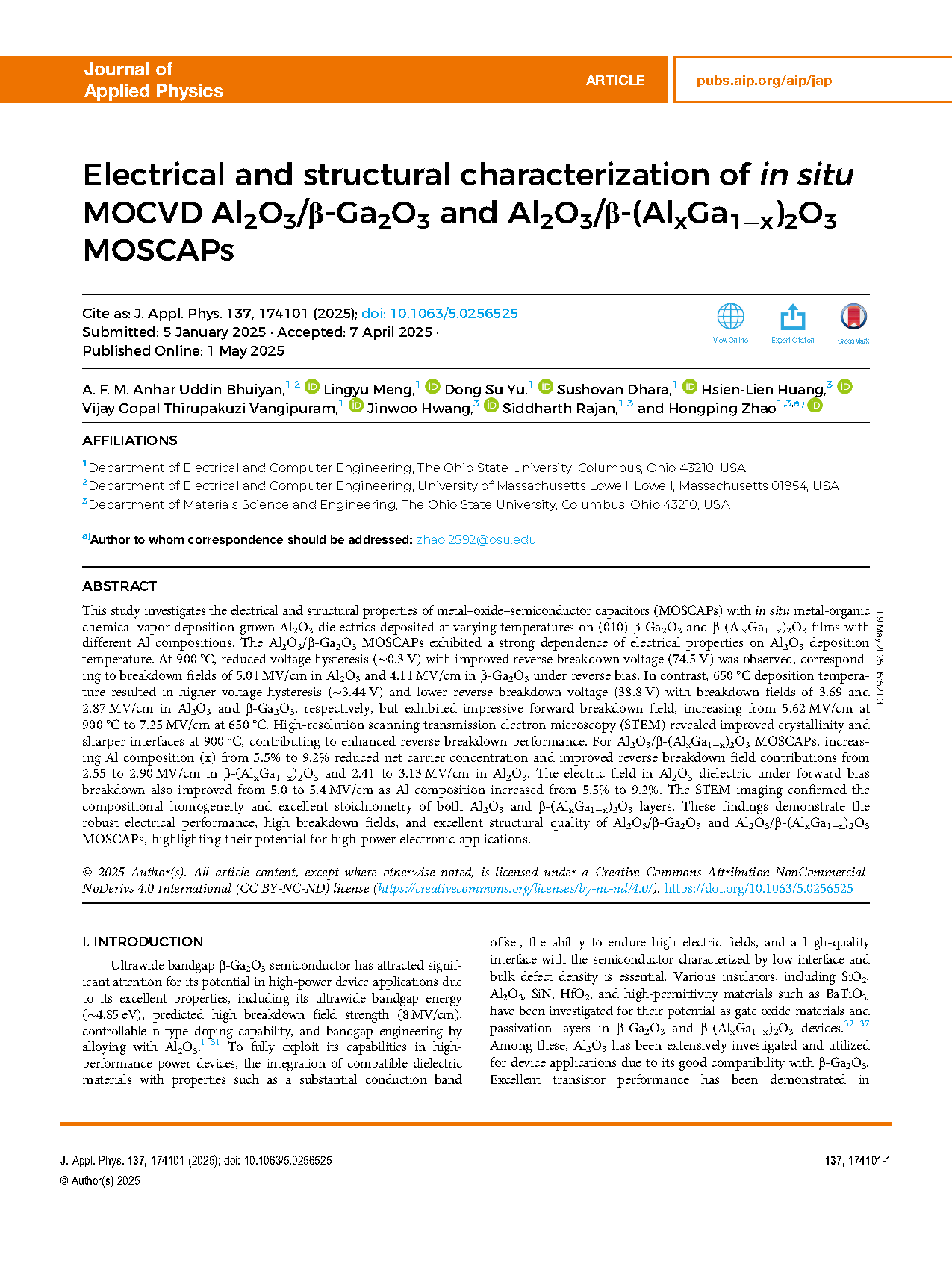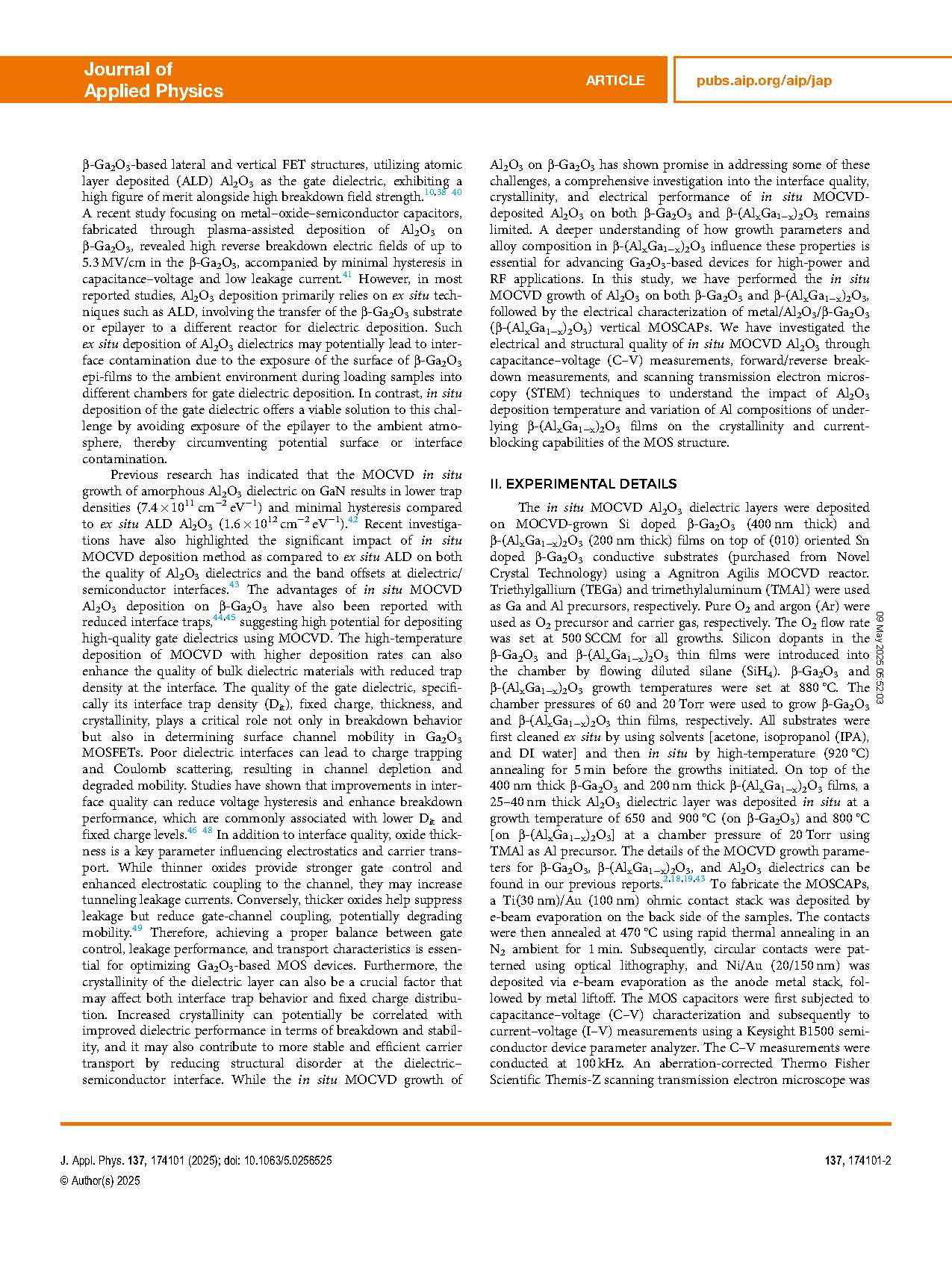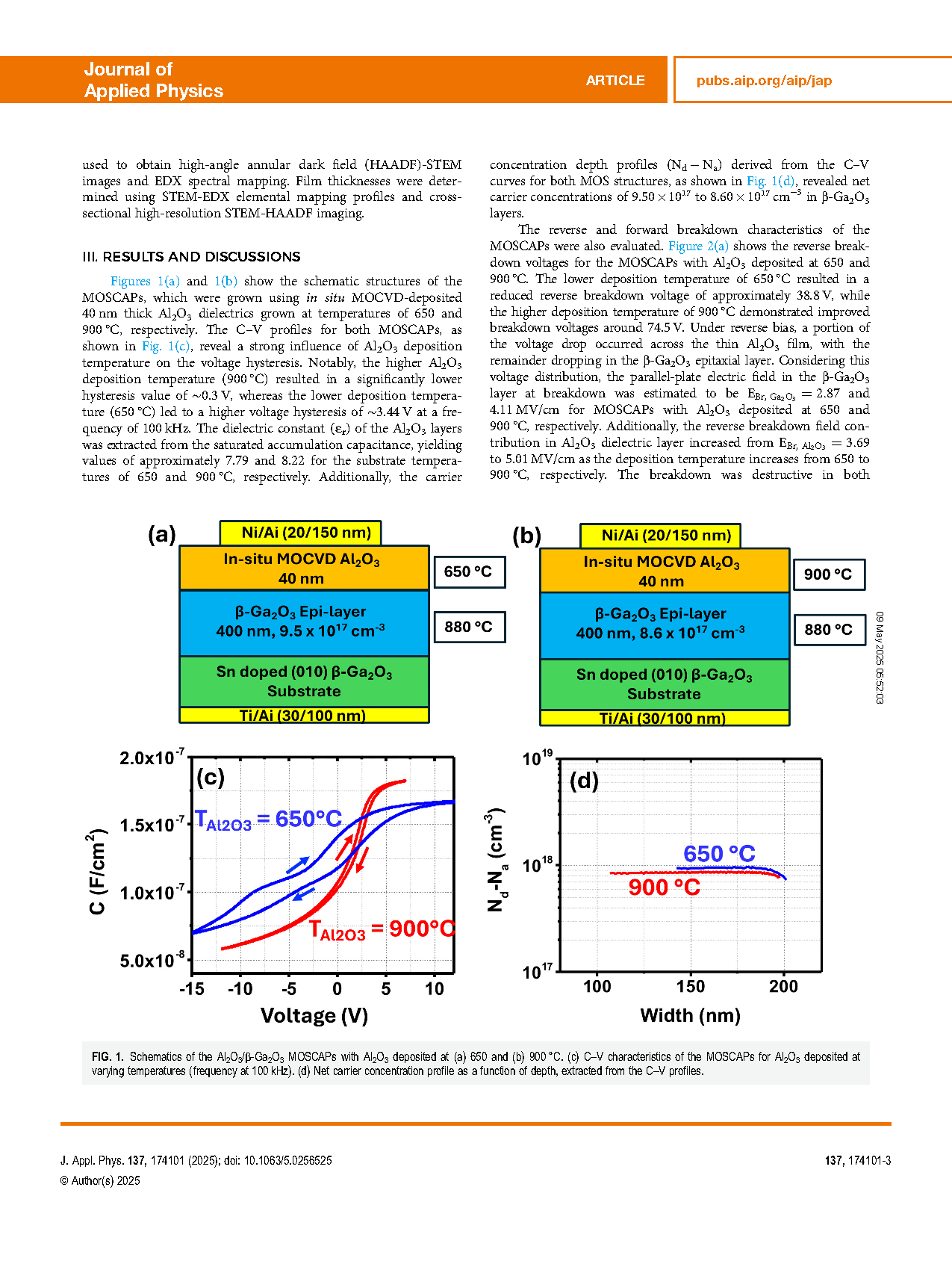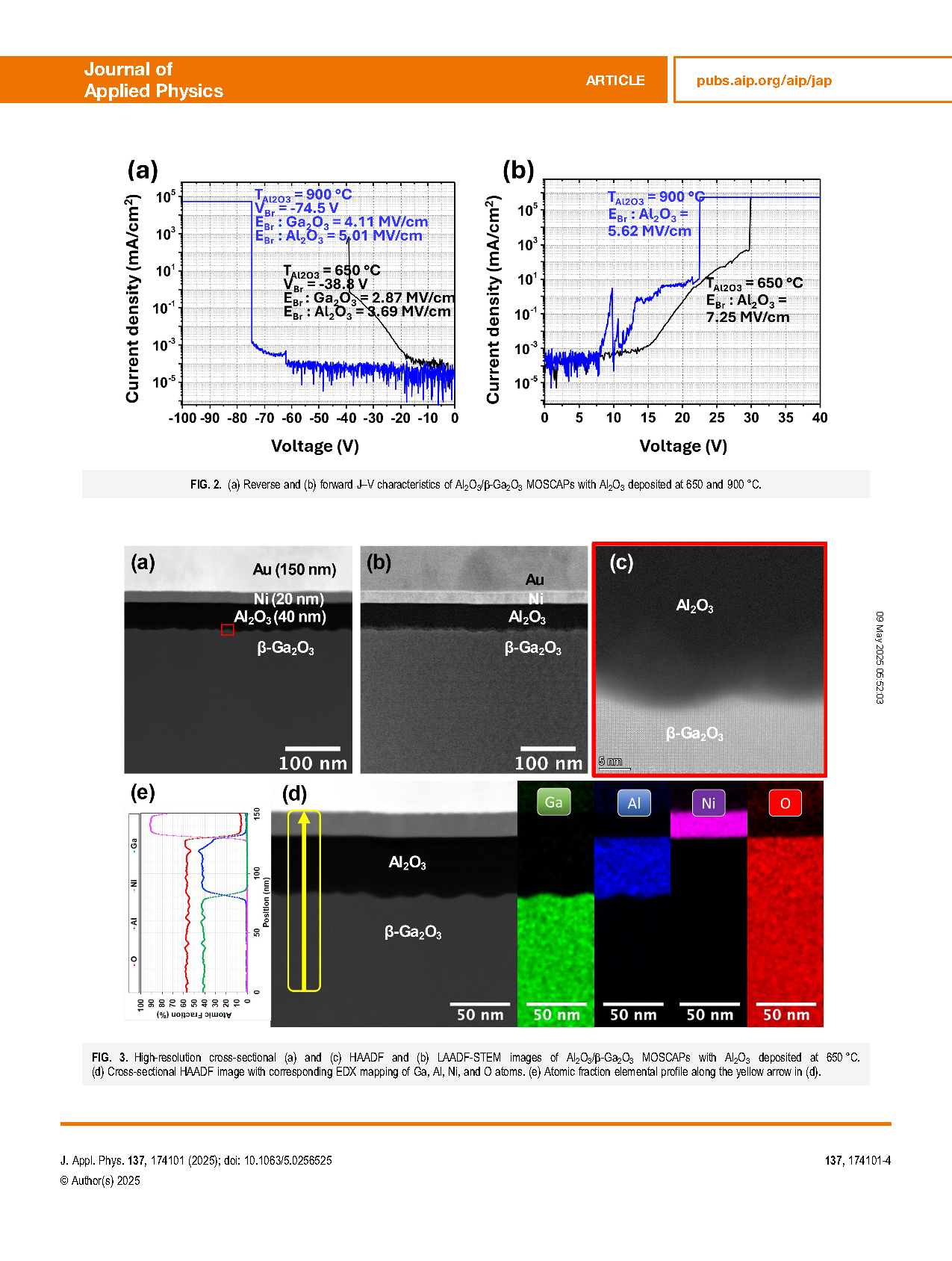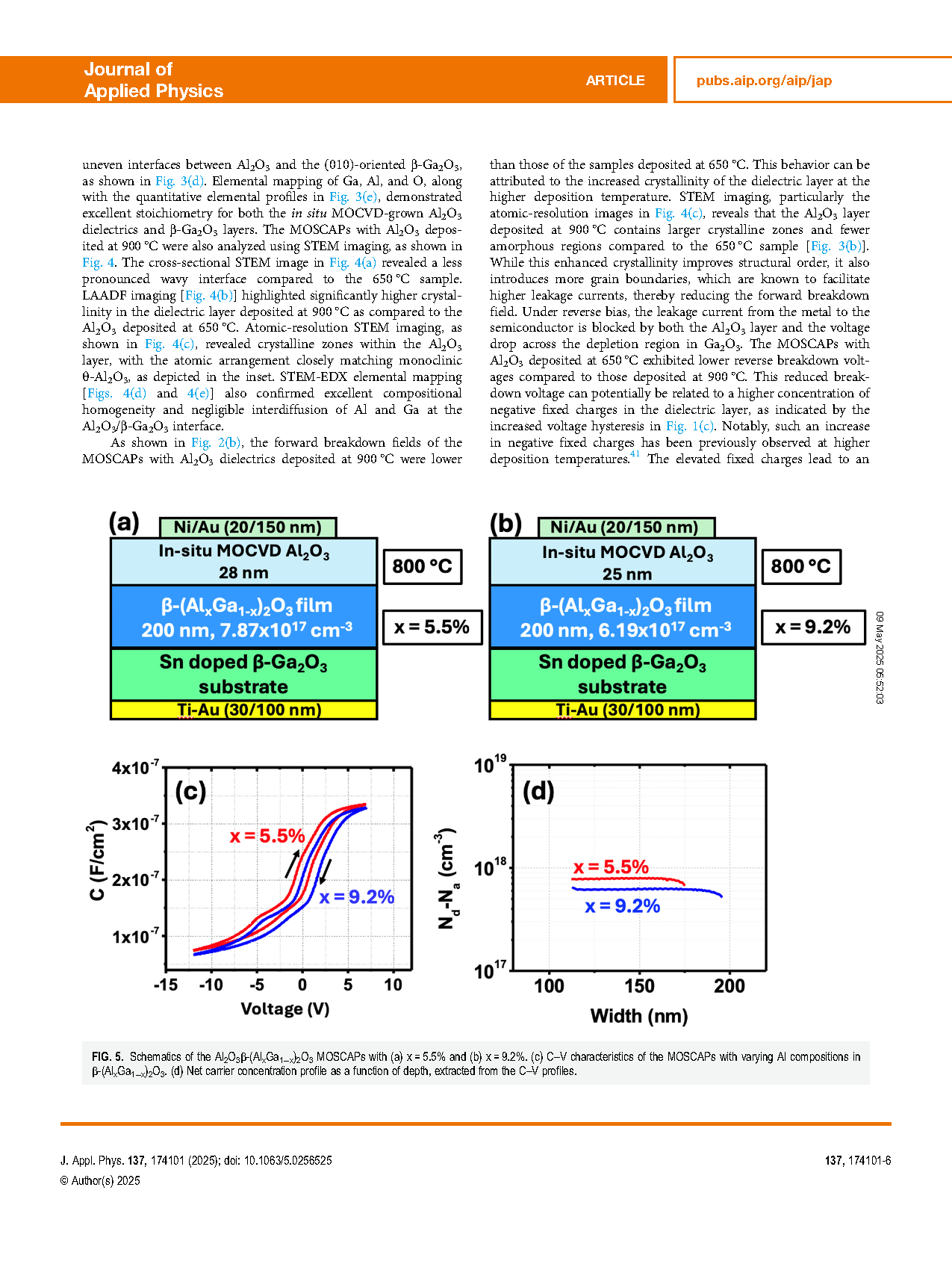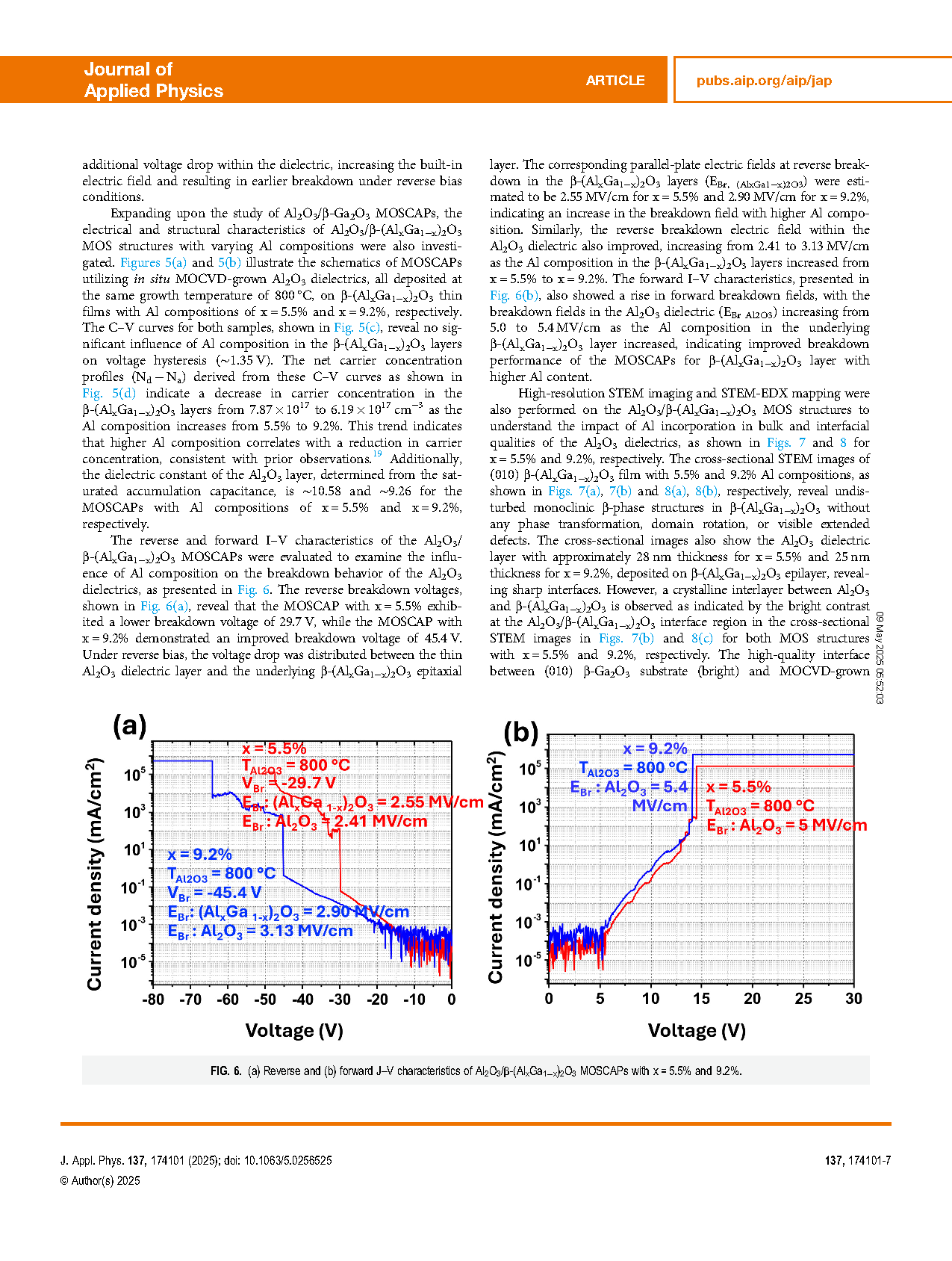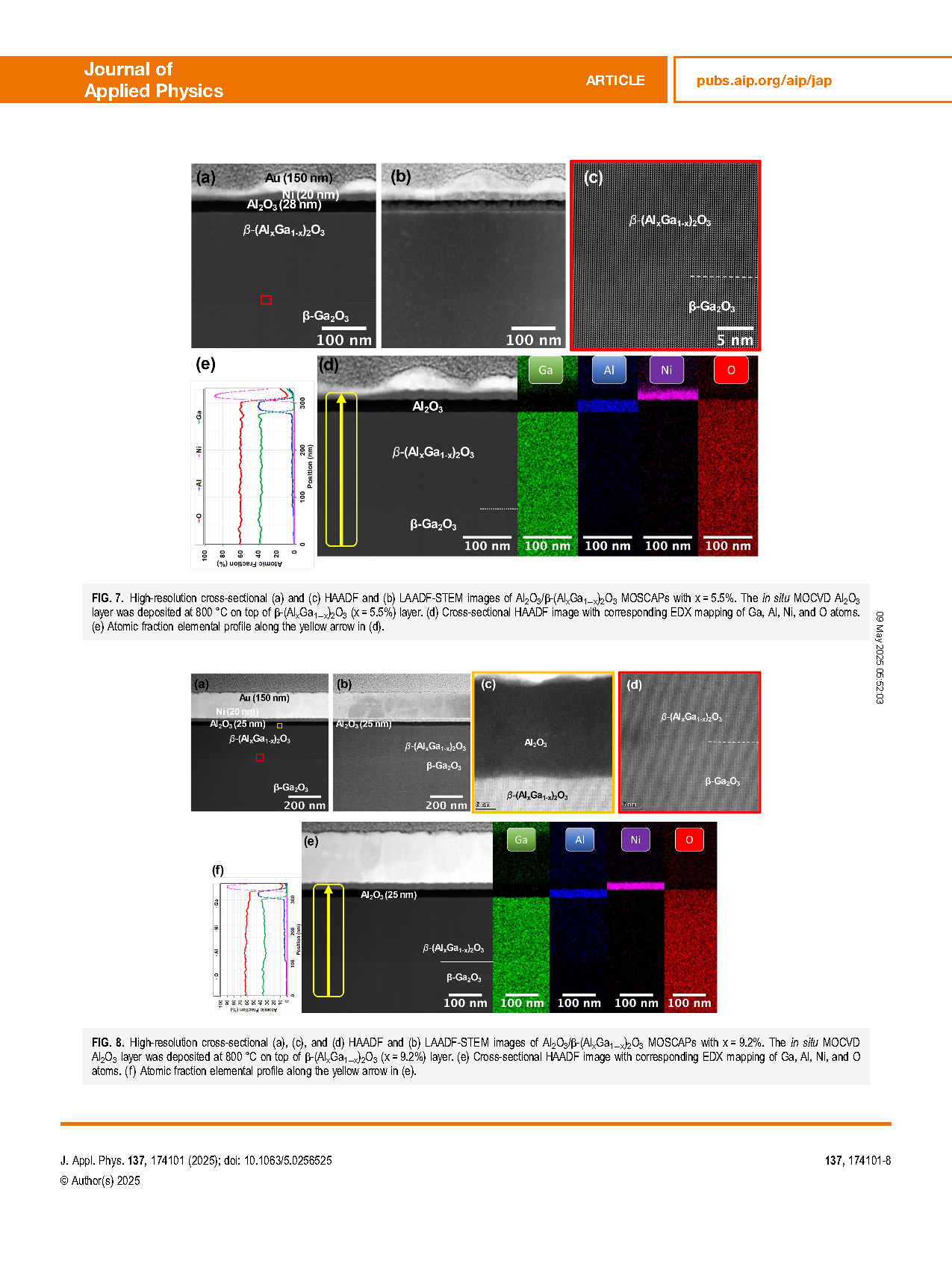
【International Papers】Electrical and structural characterization of in situ MOCVD Al₂O₃/β-Ga₂O and Al₂O₃/β-(AlₓGa₁₋ₓ)₂O₃3 MOSCAPs
日期:2025-05-29阅读:334
Researchers from the The Ohio State University have published a dissertation titled "Electrical and structural characterization of in situ MOCVD Al2O3/β-Ga2O3 and Al2O3/β-(AlxGa1−x)2O3 MOSCAPs" in Journal of Applied Physics.
Abstract
This study investigates the electrical and structural properties of metal–oxide–semiconductor capacitors (MOSCAPs) with in situ metal-organic chemical vapor deposition-grown Al2O3 dielectrics deposited at varying temperatures on (010) β-Ga2O3 and β-(AlxGa1−x)2O3 films with different Al compositions. The Al2O3/β-Ga2O3 MOSCAPs exhibited a strong dependence of electrical properties on Al2O3 deposition temperature. At 900 °C, reduced voltage hysteresis (∼0.3 V) with improved reverse breakdown voltage (74.5 V) was observed, corresponding to breakdown fields of 5.01 MV/cm in Al2O3 and 4.11 MV/cm in β-Ga2O3 under reverse bias. In contrast, 650 °C deposition temperature resulted in higher voltage hysteresis (∼3.44 V) and lower reverse breakdown voltage (38.8 V) with breakdown fields of 3.69 and 2.87 MV/cm in Al2O3 and β-Ga2O3, respectively, but exhibited impressive forward breakdown field, increasing from 5.62 MV/cm at 900 °C to 7.25 MV/cm at 650 °C. High-resolution scanning transmission electron microscopy (STEM) revealed improved crystallinity and sharper interfaces at 900 °C, contributing to enhanced reverse breakdown performance. For Al2O3/β-(AlxGa1−x)2O3 MOSCAPs, increasing Al composition (x) from 5.5% to 9.2% reduced net carrier concentration and improved reverse breakdown field contributions from 2.55 to 2.90 MV/cm in β-(AlxGa1−x)2O3 and 2.41 to 3.13 MV/cm in Al2O3. The electric field in Al2O3 dielectric under forward bias breakdown also improved from 5.0 to 5.4 MV/cm as Al composition increased from 5.5% to 9.2%. The STEM imaging confirmed the compositional homogeneity and excellent stoichiometry of both Al2O3 and β-(AlxGa1−x)2O3 layers. These findings demonstrate the robust electrical performance, high breakdown fields, and excellent structural quality of Al2O3/β-Ga2O3 and Al2O3/β-(AlxGa1−x)2O3 MOSCAPs, highlighting their potential for high-power electronic applications.

FIG. 1. Schematics of the Al2O3/β-Ga2O3 MOSCAPs with Al2O3 deposited at (a) 650 and (b) 900 °C. (c) C–V characteristics of the MOSCAPs for Al2O3 deposited at varying temperatures (frequency at 100 kHz). (d) Net carrier concentration profile as a function of depth, extracted from the C–V profiles.
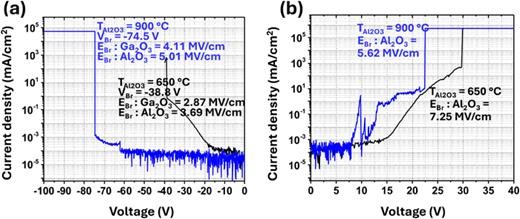
FIG. 2. (a) Reverse and (b) forward J–V characteristics of Al2O3/β-Ga2O3 MOSCAPs with Al2O3 deposited at 650 and 900 °C.
DOI:
doi.org/10.1063/5.0256525
